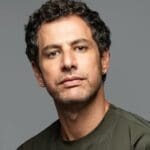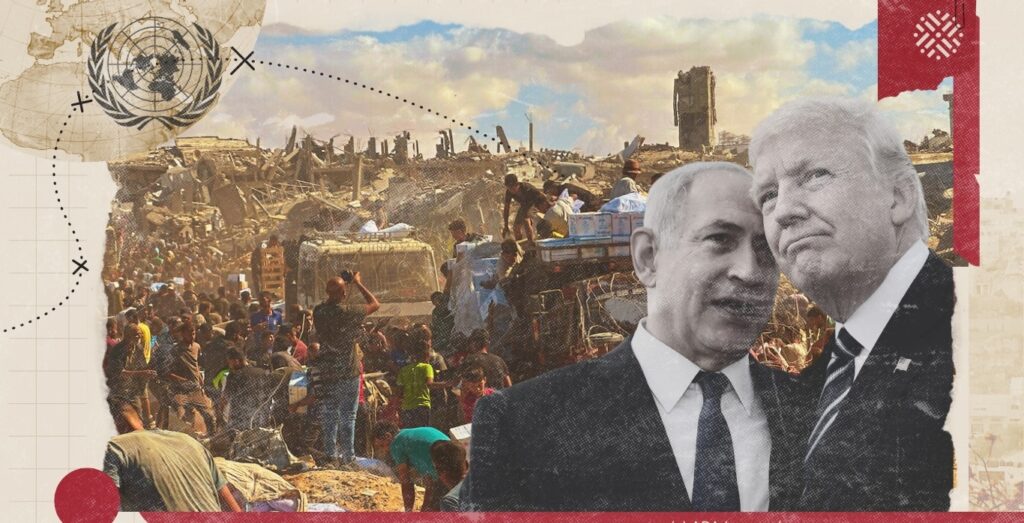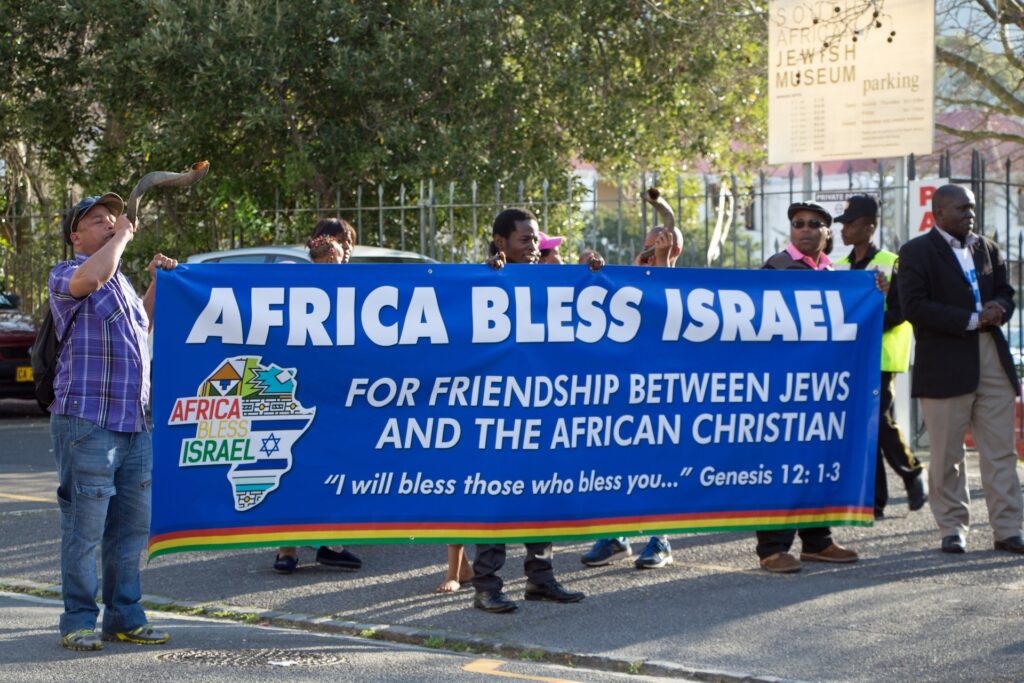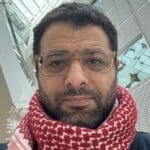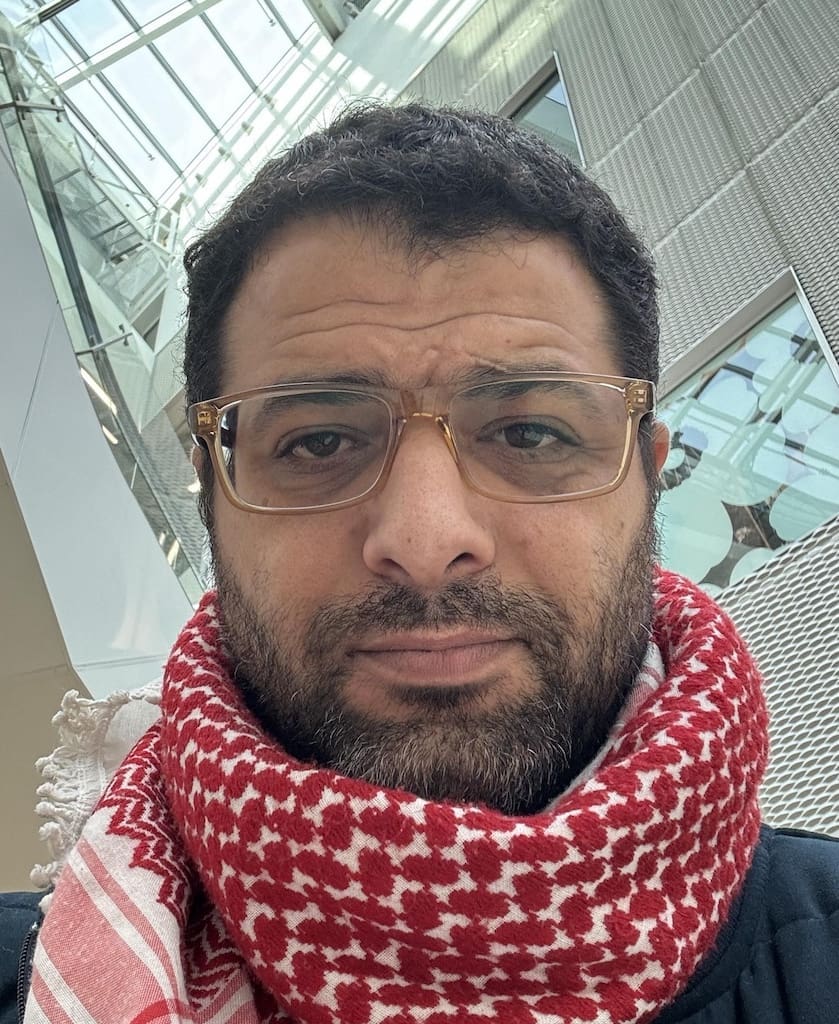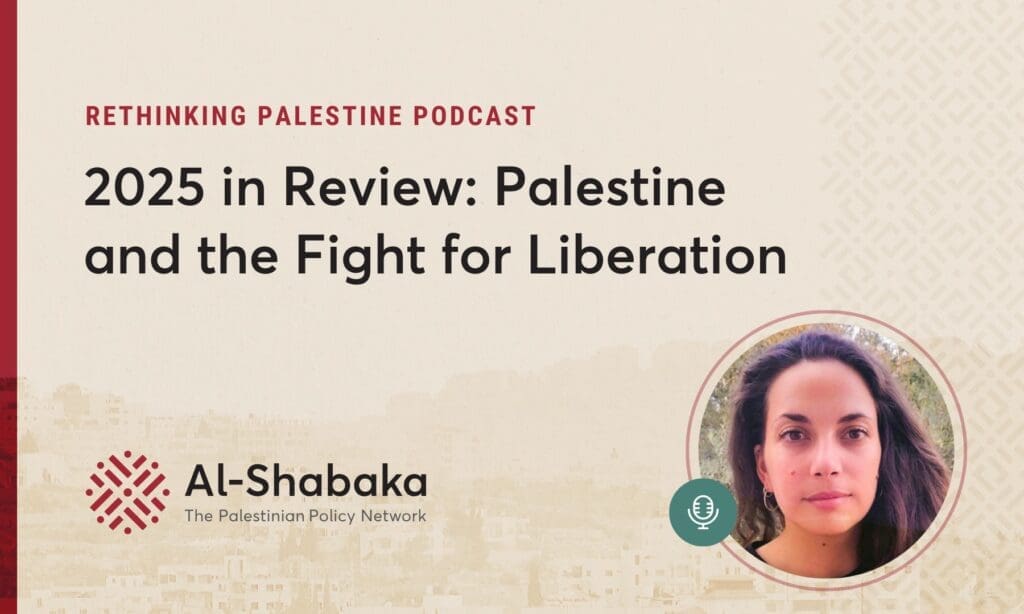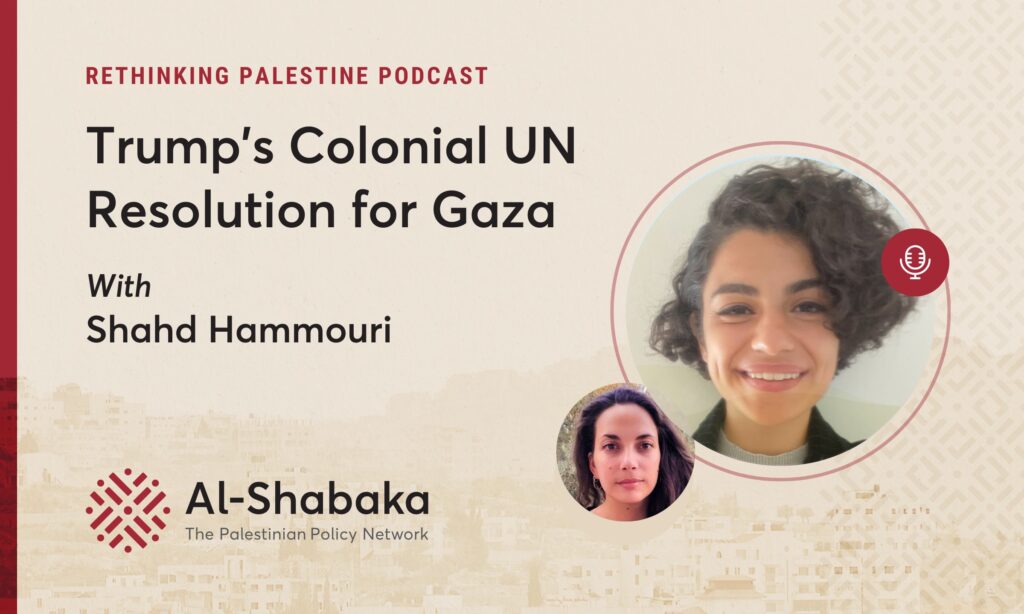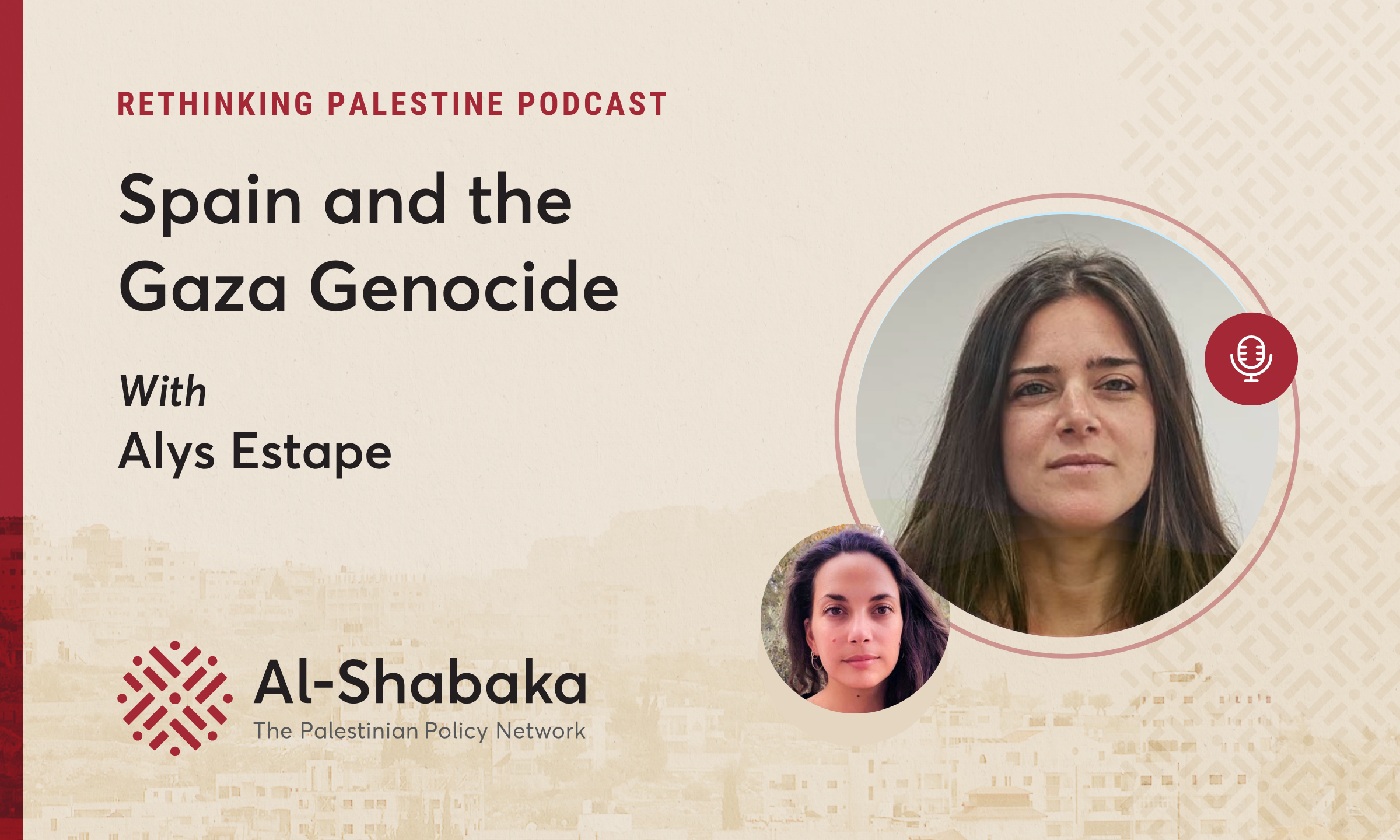About This Episode
Episode Transcript
The transcript below has been lightly edited for brevity and clarity.
Abed Kittana 0:00
What we are facing in Gaza is not actually a postwar reconstruction, but rather, as I tend to call it always, it’s an inwar reconstruction or war reconstruction. And beyond the physical destruction, the genocidal war in Gaza also targeted the social fabric, which is the core of any effort to rebuild and sustain life in any place. So rebuilding Gaza is not merely about reconstructing buildings and infrastructure; it’s about reconstructing life in Gaza.
Yara Hawari 0:38
Rethinking Palestine is brought to you by Al-Shabaka, the Palestinian Policy Network. Al-Shabaka is the only global independent Palestinian think tank whose mission is to produce critical policy analysis and collectively imagine a new policymaking paradigm for Palestine and Palestinians worldwide. For more information or to donate to support our work, visit al-shabaka.org. And importantly, don’t forget to subscribe to Rethinking Palestine wherever you listen to podcasts.
This podcast was recorded prior to the latest Israeli airstrikes on Gaza, including the March 18th massacre, which was the largest single day child death toll in the last year while discussing reconstruction and imagining a self-determined Palestinian future for Gaza, ending the genocidal violence remains the absolute priority.
At the beginning of the genocide in Gaza, there were already talks about infrastructure reconstruction. Much of it adopted the same frameworks of previous reconstruction processes. Indeed, over the last two decades, Gaza has been subjected to a multitude of Israeli assaults, which have resulted in mass destruction, rendering reconstruction necessary.
This time, however, the level of destruction and devastation is unprecedented. Over 90% of homes, nearly 70% of all buildings, including schools, hospitals, cultural institutions, archeological sites, universities, businesses, and other vital services, have been destroyed as well as nearly over 65% of the road network.
Since the ceasefire between the Israeli regime and Hamas, reconstruction discussions and planning has accelerated. In typical fashion, much of it is without Palestinian involvement and separated from the wider political context of Israeli occupation and blockade.
Joining me to discuss this topic is Dr. Abdalrahman Kittana, who’s a Palestinian architect and researcher, currently serving as a postdoctoral research fellow at Tempe University in Finland, on leave from his position as an assistant professor of architecture at Birzeit University in Palestine. Dr. Kittana has been involved in various initiatives and discussions around reconstruction in Gaza.
Abed, thank you for joining me for this episode of Rethinking Palestine.
Abed Kittana 2:58
Thank you, Yara. Thanks for inviting me.
Yara Hawari 3:01
I want to start off by asking about the concept of reconstruction in Palestine, which we all know is not the typical post-disaster, post-war context that reconstruction usually happens in.
Can you tell us a bit more about this?
Abed Kittana 3:16
Thank you, Yara. This is a very good question, actually, and it’s a typical question whenever we go into discussions with some experts about the conditions in Gaza and postwar reconstruction in Gaza. And indeed, it is not a typical post-war or post-disaster reconstruction for multiple reasons or from multiple angles.
I can say first of all, the disaster or the war has not ended yet, actually in Palestine, so the war continues. In Palestine, we remain under the control of a settler colonial system, whose ultimate objective is to replace one nation with another, to displace the indigenous population, and to replace it with a secular population.
So even if bombardment has ceased, for now, the oppressive system with all its mechanisms and objectives still exists. And of course, as long as it exists, it constantly threatens the very possibility of resuming life in Gaza, but also in the West Bank and all over Palestine. In this sense, what we are facing now in Gaza is not a post-war reconstruction, but rather, as I tend to call it always, it’s an in-war reconstruction or war reconstruction, but construction itself as well, is part of war now at the moment.
From another angle, actually the genocidal war in Gaza targeted the very foundations of life itself. So it intentionally attacked the physical infrastructure, the urban services, and damaged all essentials for survival, including agricultural and other life-sustaining resources. Beyond the physical destruction, it also targeted the social fabric, which is the core of any effort to rebuild and sustain life in any place.
So the ultimate objective and intent were to render Gaza uninhabitable, to make life itself impossible in Gaza.
It is not merely about reconstructing buildings and infrastructure; it is about reconstructing life. In general, it’s about reconstructing life in Gaza. And this, of course, demands a fundamental rethink of how human existence can be reestablished in these devastated spaces and cities. And this challenge, of course, extends far beyond the physical realm of reconstruction as a technical field.
From a third angle, I think the reconstruction of Gaza has become a matter of significant global political and geopolitical interest. As we see in the media, it is being used as a tool for political agendas or global political agendas that extend well beyond
the humanitarian need to support the people and restore their destroyed cities. So reconstruction is being rudely and obviously weaponized now as a means for political control, making the process even more challenging. So in short, all of these things make the rebuilding of Gaza an immense challenge, a very great challenge, one that is far more beyond and complex than the typical post-war construction in other cases.
Yara Hawari 6:53
Abed, thank you for that. I think the sort of elephant in the room is, can reconstruction even happen under continued Israeli settler colonialism and blockade? Because we know that reconstruction from even the previous assault in 2014 was still underway prior to this latest genocide.
Is meaningful reconstruction even possible under these conditions?
Abed Kittana 7:18
The absolute answer to this question is no, although people in Gaza managed to do some sort of reconstruction and rebuilding, the real answer is no. I mean, and I think the current reality in Gaza is proof that it’s not possible.
If the process were free from the control of threat, occupation, or if borders with Egypt were open, the situation would be entirely different. The most critical factor about reconstruction is actually mobility. It is the ability to move funds, materials, experts, machines, and other essentials.
Without these, construction is actually impossible. Yes, people can adapt and make use of some spaces in a creative way to make spaces for living and survivability, but still, large-scale rebuilding efforts like rubber clearance, restoring infrastructure, and construction of houses, all of this requires heavy machines and significant resources.
Even with the small scale and adaptations, like people rehabilitating their homes, access to building materials, tools, and financial support is essential under siege and occupation. Such processes actually cannot be happening. Especially that siege is also limiting the flow of money, the flow of material.
So it’s not only the flow of plans and strategies, but the very essentials of life and let alone that siege now is even blocking food and medicine. People will be more busy finding their food and medicine before trying to rehabilitate their buildings.
Yara Hawari 9:00
Of course, we also have to recognize that reconstruction is a big business, not just in Palestine, but also elsewhere.
Reconstruction contracts are given to certain companies, and certain materials are promoted over others. Can you speak to us about that?
Abed Kittana 9:20
Of course, this is a big issue with reconstruction in general. Post-war reconstruction is a big business because it involves massive financial investments.
It involves government contracts, international aid, and all of this will attract, of course, corporations, international corporations, private investors, and industries that will focus on infrastructure, economies, institutions, and so on. So with the reconstruction, the activities will include large-scale infrastructure projects, for example, which in turn will require the involvement of various stakeholders.
Of course, this includes construction companies, engineering firms, suppliers of building materials, as well as academic institutions, sometimes, which may contribute through research and expertise. Additionally, the reconstruction phase will lead to a boom in the real estate sector, which is a really important aspect here that affects locals and internationals at the same time.
So it’ll focus on rebuilding homes and public spaces, and other airplane services. All this will require, of course, substantial financial resources to support their reconstruction. Additionally, the reconstruction will not only focus on rebuilding homes and infrastructure, but also include economic recovery plans.
These plans aim at generating new employment opportunities and fostering new businesses or resuming some businesses. And naturally, of course, all of this requires significant financial aid. This will be a major venue for both international and local businesses to benefit from -the international funding and assistance.
It is also important to mention here that the humanitarian aid in itself, in this period, evolves to be an industry of its own. So NGOs and humanitarian organizations receive substantial funds for post-war relief and recovery efforts that create what can be called the aid economy. And this economy or industry involves logistics and other services.
All of which benefit businesses engaged in supplying goods and transportation, logistics, and other essential services. We also cannot overlook and forget the issue of corruption here because given the complexities of reconstruction efforts. There will be multiple procedures, policies, and actions that take place, many of which contain gaps and loopholes that can be exploited for financial leakage and corruption.
With large sums of money flowing into the area, many actors, both local and international actors, and sometimes reputed organizations, may try to take advantage of these opportunities for personal or political gains.
Yara Hawari 12:21
So Abed, as I mentioned, there have been reconstruction talks since the beginning of the genocide because I think people are always aware of the level to which the Israeli regime will go in its assault.
Even though this particular time has been unprecedented in terms of the level of destruction. But it’s always assumed that after any kind of Israeli assault, there will be a need for reconstruction, and with good reason. What are the reconstruction plans that we know of that have come out so far?
Abed Kittana 12:52
We can’t talk solely about plans here. We have some plans that have been published or announced, but we also have ideas and initiatives that are happening at the same time. So among the formal plans that have been announced or published are the most widely discussed and mentioned plan is the Arab or Egyptian plan.
However, this is not the only plan, of course, and there is a very important plan, which is the Gaza Phoenix Plan, which was introduced and published by the Gaza Municipalities. Presenting a strong framework for reconstruction, but of course,e it didn’t receive the same level of attention or recognition as the Egyptian plan, mainly because it was published by the people of the land, by the municipalities on the ground.
Another plan is what is called the Emerging Palestine plan, which is a private sector initiative that outlines a long-term vision for both Gaza and the West Bank over the next 50 years, including Gaza post-war construction. And additionally, there is the Emirati plan. By Habtoor Group. I don’t think it’s an official Emirati plan; it is produced and published by Habtoor Group, which is an Emirati-based firm. They have proposed a reconstruction plan for Gaza. They have a research center where they managed to make this plan, and they published it. And of course, beyond these formal plans, many other proposals and ideas exist.
For example, the Trump plan has been mentioned. So the published components appear to be more of a broad framework rather than a detailed reconstruction strategy, at least publicly, but it is one of these ideas that keeps flying. Sometimes, the Israelis also have some plans like this, but these are not really plans.
At least publicly, because we haven’t seen plans. But meanwhile, we also have independent initiatives such that involve groups of architects and planners developing building designs and special solutions for different spaces and to support municipalities and local organizations with some plans.
They are working really rigorously and in very good terms. But it is also these activities that lack a comprehensive master plan, so they don’t work within a comprehensive reconstruction plan. Also, there is a platform for gas reconstruction, which is a platform that is established by Gaza municipalities.
They also propose design proposals for many places in Gaza and they meet a competition for university students and architects, where they propose some redesign or design for some places. But as I mentioned, it is not part of a comprehensive plan. So in general, reconstruction efforts are being shaped by a mix of governmental plans, the private sector, and independent design proposals.
All of these, in general, reflect a diverse and complex landscape of strategies and ideas, and even backgrounds.
Yara Hawari 16:20
If you’re enjoying this podcast, please visit our website, al-shabaka.org, where you’ll find more Palestinian policy analysis and where you can join our mailing list and donate to support our work.
It’s worth mentioning that the EU actually came out in support of the Arab Egyptian plan. Can you tell us a bit more about the details of that plan and what kind of Palestinian input there was?
Abed Kittana 16:45
I think the EU stance, from my perspective, because it’s the only other plan than Trump’s plan, not because it’s the most applicable plan.
So if I want to talk about the Egyptian plan, technically, the plan that is published, it consists of two sectors or two sections, if I can say. The first is more about political and administrative issues that I actually cannot reflect on because this is more political and administrative.
But the other section is the technical report. The technical report is about the reconstruction procedure itself. And here again, it consists of two sections. The first is about theoretical guidelines and practical solutions. And sometimes it’s more about the theoretical aspects of the reconstruction and how they want to conduct the reconstruction.
And it talks about Gaza, the statistics, and the studies that have been done, and so on, and some case studies. The other section is the plans, the master plan, the special master plans, and the special solutions, which also include typologies of buildings, typologies of spaces, and typologies of camps that they want to create to host the displaced temporarily.
All of these are technical and from a technical view, I think the master plans, the drawings, and the special solutions are firstly out of context and secondly out of scale. They cannot be applied at all, actually. Even those who put them, if they themselves go to the field, they cannot implement them on the ground.
Plans are completely ignoring all the theoretical sections that the plan itself includes. So there is a theoretical section that says, for example, to keep the property rights, to keep the people in their places, but the plan actually removes all property rights. There are no cities there, no places there, no identity.
And it replaces it with a new identity that doesn’t look like any other Palestinian city, although they make some analysis of how Palestinian architecture looks like, what is the identity of the Palestinian architecture, but it is not only about making some nice facets through AI generated photos that you can convince that this is national architectural identity of racism.
So I think the plan in its theoretical and discursive part it is good. It has many good aspects, and for my knowledge, the Palestinian authorities have contributed to this section. So the theoretical section and to the administrative and political section, but I don’t think they contributed to the special or technical section, which is more about the designs.
Of course, let me make it clear, when I say the Palestinian authorities, this does not mean the municipalities and Gaza. So municipalities and Gaza have not been consulted about this at all. So they heard about it from the media, and they were not consulted at all about these things.
Yara Hawari 20:01
That’s a really interesting point that the theoretical part of the plan feels completely disconnected from the technical part of the plan.
So, how does this compare with the Palestinian-led plan, such as the Phoenix Plan and the Palestinian Authority Plan, which we haven’t mentioned yet?
Abed Kittana 20:22
The Palestinian Authority Plan is, we can say, included in the Egyptian plan; it does not differ a lot. And it does not cover many aspects that need to be covered.
But also the Palestinian Authority Plan, I think it was produced in Ramallah, so it was not produced in Gaza. The only plan that was produced by the Gazan people, not only by the Gazan people, but where the Gazan people, the municipalities and engineers on the ground were part of the development of the Phoenix Plan, and this Phoenix Plan is a 200-page document that puts a framework for post-war reconstruction.
It doesn’t include any master plan or any special plan because it believes that this should be created once the war stops and by planners in Gaza and by municipalities in Gaza, and based on the assessment at the time. But of course, having the document without a special master plan makes it visually less appealing because people like to look at master plans and images.
But anyway, it is a document that puts framework where most aspects of reconstruction efforts can be included. For example, it is divided. The intervention is divided on three phases, emergency, stabilization phase, and reconstruction and development phase. So the emergency phase deals with essential needs during war and until six months after war stops.
The stabilization phase deals with essential needs and essential measures that municipalities should take once the war stops, until three years. And the reconstruction and development phase starts from the time the ceasefire is approached and it lasts four, five to 10 years, depending on the financial support and the machinery, and so on.
Of course, in all these phases, we have also three sections in each phase, which are the criteria for interventions, which are theoretical principles that guide the interventions. And these, for example, include wartime resilience, social cohesion, heritage preservation, and the local identity. All of these things come to mind when someone wants to preserve the identity of the Palestinian existence in Gaza and the survivability and resilience capacity of the Palestinian people in Gaza.
These are all included in the criteria section. And then it includes the component section, which every master plan or every policy plan should include. And then we go to the sectors, to service sectors like housing, health, and water, and all this. And based on the criteria that were mentioned before. Each of these sectors has a different set of activities and actions. And the plan even puts who is in charge of these actions, what the needs are for these actions, and the breakdown of the actions. So it is also an action plan at least.
In the emergency and stabilization phase, all of these stages and breakdown of actions were discussed and adjusted, and adapted during war, actually. So, working on this plan started in December 2023, so it was only two or three months after the war started, and the first document was published in 2025.
So it took almost a year of discussion and adjustment based on the consequences and based on the emergent conditions on the ground. And I think based on feedback from many experts around the globe, from Europe, from the Arab world, from people who were planners, architects, and consultants in reconstruction plans in many parts of the world, they highlight that this is a very comprehensive and essential plan that is competing with all other plans.
It is very well written. It’s very well developed, and it has been published by the municipalities in a press conference, and the municipalities have asked all agencies to deal with it. And I’m aware that many UN agencies are reading it and considering it in their images.
Yara Hawari 24:50
It’s interesting that you mentioned, because it doesn’t have that master plan, and it doesn’t have the sort of appealing or what is generally considered as appealing sort of aesthetics.
It’s generally been overlooked. So I wanna ask you, in terms of the next steps in this discussion around reconstruction, do you think it’s likely that the major powerful actors, namely the US, will want to move forward with the Egyptian plan, because that’s what sort of seems to be the most likely scenario.
And if so, what are the consequences for Palestinians in Gaza?
Abed Kittana 25:29
Let’s just make things clearer. I think the reason why Gaza is not being considered is not because of the aesthetic and images. I think it’s because it comes from Gaza, so it comes from the municipalities and everybody is avoiding even dealing with municipalities there for political reasons only, although they are the only agents working on the ground.
In terms of aesthetics, the document is very beautiful, and it’s really produced in a very appealing way, but when you put text to discuss an image, then it becomes a bit weak because the other plans have images of master plans. So this is the comparison that I made because people don’t like to read a lot, they just look at images.
In terms of what can happen next, I think I can borrow from what the municipalities say, although maybe they are really very passionate, but they say nothing can happen on the ground if we don’t agree on it. People own the land, so it’s not like many other places in the world where people own the apartment, for example, or they own the building. But in Gaza, most of the buildings are built on private properties, so people own the land. So Abu Mohammed, Um Mohammed, Abu Ahmed, they own the land on which they have the house, and no force can force them to sell the land.
So in practice, any other plan that will be imposed on Gaza, it has to pass through stages like acquiring the land, if it means acquiring the land, also there is the shop drawings that will be used for building it, they have to be approved by municipalities, by local agencies, by local institutions there, the engineers association and the municipalities.
At the end, they believe that they are on the ground and they will guarantee that they will rebuild the way they want to rebuild it. Of course, while having this very patriotic and very bold stance, they know that this may delay the reconstruction and this may even hold the reconstruction at some point, and this may create some problems, but everybody in Gaza is aware of the political reasoning for such plans that are imported from outside.
That’s why the municipalities are very passionate about working on the creation of the Gaza Phoenix Plan. The absence of any local plan paves, the way for external plans to come and for themselves, of course, a good idea about the Gaza Phoenix Plan, it does not provide a plan to be implemented, it gives a framework, so even with the Egyptian plan, it can be adjusted according to the principles and guidelines in the Gaza Phoenix Plan.
Which means that architects and planners who will decide the regional plan for Gaza and the urban master plans for Gaza can be enlightened or informed by the principles of the Gaza Phoenix Plan, and then they can produce some architectural interventions or infrastructure interventions that align with the Gaza Phoenix Plan.
So I think one of the good things about the Gaza Phoenix Plan is that it involves a lot of things that allow for different plans to be adjusted and incorporated, and even sometimes merged to produce a better urban and architectural landscape.
Yara Hawari 29:00
Is that kind of scenario possible, a Palestinian-led reconstruction plan or a reconstruction plan that incorporates Palestinian ideas?
Is that possible in the current political context or climate?
Abed Kittana 29:14
I think in the current political climate, it’s not easy. The municipalities need to fight to make the reconstruction align with the principles that they want to follow. For example, preserving the property rights, preserving the architectural identity of the city, and preserving the social structure of the city.
All of these things are essential for the municipalities and for the people of Gaza and the proposed master plans that I have seen in the Egyptian and in the Emirati ones. They destroy all of these things completely. But of course, as I mentioned, they cannot be implemented because they are out of context and out of scale.
So, architecturally, they are not possible to be implemented. But I may go back a bit, some years after the war in 2014, also, reconstruction was very heavily controlled by the Israelis, and it was not as smooth as it was supposed to be. And tens of thousands of buildings were not really rebuilt since 2014, which means people stayed living in the temporary phase until this war came.
And actually, I think if Palestinians want to be stable about the reconstruction, this may also lead them to stay for a longer time in tents and partially demolished buildings. But let me take you 100 years ago, actually to the First World War, and this is exactly what happened with Gaza, particularly Gaza.
We, the Palestinians, started this episode of confrontation with the colonial project, the Zionist Colonial Project, and the British Imperial Project in Palestine with the destruction of Gaza. So after the third battle of Gaza in 1917, the British could enter Palestine and occupy Palestine.
The city of Gaza was deemed uninhabitable by the high commissioner Herbert Samuel at that time and Arif al-Arif mentioned that almost one third of the houses were completely demolished, and the rest of the homes were damaged or lacked their rooftops or windows, or doors. Of course, at that time, Gazans were evacuated.
All of the Gazans were evacuated from Gaza and they lived in Haifa and Jerusalem, and even in homes and in Hamma and in Damascus. And out of 28,000 residents who lived in Gaza before the war, only 18,000 came back because when cthe easefire was stabilized in 1918, when they came back to their homes, there was no city to survive actually.
And unfortunately, they had no other support. Nobody supported them in rebuilding their homes and even the British authorities started to enforce the property taxes even against the properties that had been demolished. And also people started to take stones and the parts of their demolished buildings to rebuild them.
There were many cases of fining these people who are rebuilding their buildings. Why? Because they are using antiquities. But actually, most of these buildings were made from recycled stones of antiquities. And I have read many cases, actually even in Shawa’s case, one of the big merchants of Gaza, he had a very fantastic building.
In his building, there were stones that were considered antiquity stones, but he just reused the stones that were in his house. And he was fined for rebuilding because this is about using antiquity stones in construction. Maybe it’s a bit surprising that when Herbert Samuel asked the British government to help Gazans in rebuilding their city in a method to capture the hearts of the people to make Britain look good in the eyes of Gazans after destroying their cities.
The first answer of the British government was, we lack funds for this, but they think that the Zionist movement can afford this. And they suggested that the Zionist movement can take part in reconstruction. And actually, the first attempt by the government to support people in Gaza to rebuild their homes was announced in 1925, so seven years after. The construction, but also this one, this was a method – there were Muslim, Christian, and Christian Association in Palestine, and their office published an article saying, this is a perfect plan to sell the Gazan land for the Jewish people literally like this.
So even these plans that were supposed to help the Gazan people rebuild their homes were actually to facilitate Jewish settlement, Zionist settlement in Gaza. People rejected the plans and people co-created their homes, and they lived in partially demolished homes for 10 or 15 years. Even the Second World War came while many buildings were still in ruins.
Yara Hawari 34:33
Abed, thank you for sharing that really important historical context and yet again, another example of Palestinian resilience and resistance in Gaza amidst colonial and settler colonial destruction. I think we’ll leave it there for this episode, but thank you so much for joining me, and we hope to have you on again soon.
Abed Kittana 34:55
Thank you, Yara. It was really my pleasure to be with you.
Yara Hawari 35:00
Rethinking Palestine is brought to you by Al-Shabaka – the Palestinian Policy Network. Al-Shabaka is the only global, independent Palestinian think tank whose mission is to produce critical policy analysis and collectively imagine a new policymaking paradigm for Palestine and Palestinians worldwide. For more information or to donate sport our work, visit al-shabaka.org and importantly don’t forget to subscribe to Rethinking Palestine wherever you listen to podcasts.
